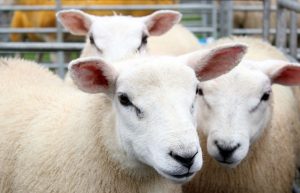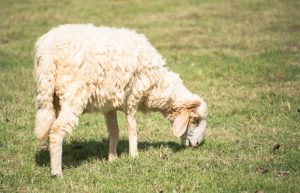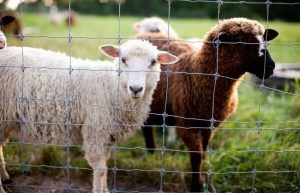
All You Need to Know About Caring For Sheep
Adding sheep to your farm or homestead can be a great move since not only are these animals low-maintenance and diverse in their uses but they’re also known to be friendly and gentle. As with any livestock, sheep do require specialized care to help them thrive. In this article, I’ll cover all I know about caring for sheep!
So, how do you care for sheep? There are specific aspects to be aware of when caring for sheep and seeing to their needs. These include:
- Understanding sheep behavior and characteristics
- Providing adequate sustenance for your sheep
- Providing safe and adequate shelter and fencing for your sheep
- Scheduling and performing routine medical care for your sheep
Sheep do require specific care that differs from other livestock. While all the points above may seem broad, it’s important to understand the needs of your sheep so that you can properly care for them. If you want to learn more about caring for sheep, keep reading!
Sheep Behavior and Characteristics
The natural instincts of sheep largely determine their behavior and needs when it comes to providing them with care. Understanding the natural characteristics of sheep can help you understand why sheep require certain living situations and need specific medical care. Here is a list of things to note about sheep behavior and characteristics:
The Difference Between Wool Sheep and Hair Sheep
As you go to plan your sheep flock, you’ll learn that there are actually two types of sheep. Wool sheep are sheep of certain breeds that grow a thick wool fleece throughout the year while hair sheep are certain sheep breeds that have a simple short hair coat like most other livestock animals. While the only difference between these two types of sheep is their coat, this aspect does add a few extra care requirements for wool sheep in particular.
Hair sheep do not need to be shorn and they do not need to have their tails docked. Wool sheep, on the other hand, will need to be sheared at least once a year, and docking their tails can help improve cleanliness since a long wool tail can get tangled with feces.
Sheep Are Prey Animals
When it comes to understanding sheep behavior, there is one core aspect to always remember; sheep are prey animals. This fact will dictate how they react and respond to every situation. Here is how being a prey animal affects not only the physical makeup of sheep but also their thought processes and responses:
- Sheep have monocular vision (eyes on the side of the head) that enables them to see almost 360° around themselves.
- Sheep have hooves so they can propel themselves forward and flee from danger.
- Sheep live in flocks to provide extra protection and surveillance for predators.
- Sheep will run away at any sign of danger.
- Sheep won’t approach animals, people, or objects they are unsure about.
You may have been wondering why sheep always seem jumpy or unsure of things. Well, this is their natural instinct as prey animals trying to protect them from danger. Keep this in mind as you handle your sheep. If your sheep seems especially anxious, this is a good sign that it feels like it’s in danger.
Sheep Are Social Animals
One aspect about prey animals is that they tend to live in social communities to provide extra security and protection from predators. Sheep will live in a group called a flock. If a sheep is separated from its flock, it can become anxious, nervous, and depressed since it now feels vulnerable to danger.
For a sheep’s peace of mind, it’s important to always try and keep it with other sheep or at least other livestock animals like goats. If you want to purchase a sheep, you should plan on purchasing multiple ones to provide a flock environment. I recommend purchasing 4 – 5 sheep to provide a secure flock setting.
To learn more about keeping a flock and providing a secure environment for your sheep, check out my article Can You Keep a Sheep By Itself? Essential Guide.
Sheep Sustenance and Diet
 Every animal needs an adequate amount of food and water to survive. Proper sustenance can provide your sheep with the proper sugars, proteins, and minerals they need in order to develop and produce energy. In this section, I’ll cover all you need to know about sheep and what they eat.
Every animal needs an adequate amount of food and water to survive. Proper sustenance can provide your sheep with the proper sugars, proteins, and minerals they need in order to develop and produce energy. In this section, I’ll cover all you need to know about sheep and what they eat.
How Much Food Does a Sheep Need?
Sheep need to eat an average of 2% of their body weight per day. This means a 150 lb (68 kg) sheep will need to eat 3 lbs (1.4 kg) of food each day. The majority of your sheep’s diet should be forage in the form of grass or hay. Sheep are ruminants that are designed to digest a large amount of vegetation and effectively extract sugar and proteins from the grass or hay.
How Much Water Does a Sheep Need?
The amount of water a sheep will drink on any given day varies greatly. You will find that sheep can drink anywhere from 0.5 – 5 gallons (1.8 – 19 L) of water a day. The amount of water your sheep drinks will vary depending on the moisture they consume from grazing, mental and physical health conditions the sheep may be dealing with, and climate and weather patterns.
With all that said, it’s important to provide your sheep with enough water to quench their thirst. To be safe, if should provide at least 5 gallons (19 L) of water per day per sheep. This means that if you have a flock of 5 sheep, you’ll need to provide at least 25 gallons (94 L).
What Do Sheep Eat?
Sheep are grazing animals, meaning that they rely heavily on a diet of grass, legumes, and hay. This type of forage should make up the majority of your sheep’s diet. Sheep will also browse like goats, although they aren’t quite as hardy. They may eat bark, twigs, bushes, shrubs, and weeds that they find in their pasture.
If your pasture doesn’t produce enough grass to sustain your sheep, you should provide the flock with hay. Hay is simply grass that has been cut, dried, and baled for storage purposes. For the most part, hay provides about the same amount of sugars and proteins that grass would.
You can feed your sheep grain to provide them with extra sugars for development, pregnancy, lactation, and weight sustainability. While grain can help your sheep maintain a healthy weight and get extra minerals they may need, it should not be their main source of sustenance since it isn’t what sheep would naturally eat.
What Foods Should Sheep Avoid Eating?
Oftentimes, sheep are known to be low-maintenance livestock that can live out in a pasture 24/7 and survive off of a good supply of grass and forage. While this is true, there are some plants and other food sources that can wreak havoc on your sheep’s health. Here is a list of things your sheep shouldn’t eat:
- Algae
- Avocado
- Bracken Fern
- Broccoli
- Cabbage
- Copper
- Flax
- Holly
- Milkweed
- Nightshade
- Oak
- Potatoes
- Rhubarb
- St. John’s Wort
- Turnips
- Yew
As you can see from the list above, it’s important to check your pastures for vegetation that could be toxic to your sheep. It’s also important to avoid feeding your sheep certain snack foods that you may think it’s alright for them to eat but it’s really not. By digesting something toxic, sheep can face serious health consequences and even death.
Housing, Fencing, and Shelter for Sheep
Before you can even get sheep, you’ll need a place to put them. You’ll need adequate fencing to keep sheep on your property and to keep predators out. You’ll also need a form of shelter to protect your sheep from the elements. Here are some things to consider as you plan for your sheep:
How Much Space Do I Need For Sheep?
One acre of land can usually produce enough forage to sustain two sheep; with proper pasture management and additional diet provisions, one acre can provide enough space to keep 8 – 10 sheep.
The amount of space you need for a flock of sheep depends on the quality of your pasture and the pasture management systems you practice. Good pasture management can help you get the most out of your pasture. Rotating pastures and following practices like strip grazing and creep grazing can enable you to keep more sheep in a smaller area.
What Fencing is Best For Sheep?
 Fencing can be expensive to install and requires routine inspections and repairs to maintain. Good fencing for your sheep should contain your sheep to your property as well as prevent predators from reaching your flock. While there are many different types of fencing out there, the best type of fencing for sheep is woven wire fencing.
Fencing can be expensive to install and requires routine inspections and repairs to maintain. Good fencing for your sheep should contain your sheep to your property as well as prevent predators from reaching your flock. While there are many different types of fencing out there, the best type of fencing for sheep is woven wire fencing.
The good news is that woven wire fencing is often easy to install and costs less than most other fence types. The woven wire can easily be stapled or attached to wooden or metal posts. The woven wire creates a barrier that your sheep or predators will not be able to get through. For extra protection, you can bury the fencing at least 1 ft into the ground to ward off predators that may try to dig under the fence.
Do Sheep Need a Shelter?
Sheep will need shelter to provide them an escape from the heat and the elements. A good shelter will also provide them with a dry place to rest. Even with thick wool fleece, sheep can be susceptible to hypothermia when in cold and wet environments. Sheep will naturally go to a shelter when they want to escape the heat of the sun or the rain or snow.
At the very least, you should provide your sheep with a run-in shed that will shield them from the elements and act as a windbreak. To learn more about shelter for sheep, check out my article Leaving Sheep Out in the Rain: Everything You Need to Know.
Can Sheep Be Left Out at Night?
Since sheep are small livestock more susceptible to predators, you may be wondering whether you should leave your sheep out in the pasture at night or not. Most predators are nocturnal and will be more apt to hunt at night. There are some things you can do to protect your sheep at night.
Get a Livestock Guardian Animal For Your Sheep
While you can leave your sheep out at night, you can also provide them with some extra protection by investing in a livestock guardian animal. Popular livestock guardians include dogs, donkeys, and llamas. These animals are known to fight off predators that may try to attack your flock. These animals can live out with your flock at night to keep your sheep safe from predators.
Close Your Sheep in a Pen or a Barn at Night
Another way you can provide your sheep with security and protection at night is by shutting them into a corral or barn. The walls of a barn and the height of a corral fence will keep predators out. If you do plan on following this method, be willing to provide your sheep with hay for the night so they have something to eat.
Routine Sheep Care and Maintenance
As with any animal, sheep require routine medical maintenance to provide comfort, cleanliness, and health throughout the year. Here is a list of procedures you should be aware of when it comes to caring for sheep:
How Often Do Wool Sheep Need to Be Sheared?
Did you know that a wool fleece on a sheep will continuously grow, getting heavier and heavier? Wool can also trap dirt, feces, and moisture, which will threaten the health of your sheep. Wool sheep are usually shorn once a year in the springtime to give them relief for the hot summer months and to practice cleanliness.
Even if you don’t plan on producing wool from your sheep for profit, the sheep will still need to be shorn. When shorn in the springtime, the sheep will have enough time to start growing a thick wool fleece before the cold months of winter hit.
How Often Do Sheep Need Their Hooves Trimmed?
Much like a human’s fingernails, a sheep’s hooves continuously grow. When not maintained, a sheep’s hooves will grow so long that their weight becomes displaced. This can negatively affect their bone structure, balance, and joints. For this reason, sheep will need their hooves trimmed every 6 to 10 weeks.
To trim your sheep’s hooves, you’ll need small hoof trimmers, a paring knife, and a hoof pick. The goal is to trim the hoof back until the soles of the hoof are even in length and in width, which will help the sheep properly balance. Trimming a sheep’s hooves is easier said than done, as you’ll usually have to flip the sheep over to get it done!
How Often Do Sheep Need to be Dewormed?
Certain sheep breeds are particularly susceptible to intestinal parasites. These parasites can cause your sheep to become malnourished, dehydrated, and a list of other health problems. Sheep should be dewormed every 1 – 3 months to keep them safe from these harmful parasites.
One of the most common ways to deworm your sheep is by using a syringe to squirt deworming paste into your sheep’s mouth. You’ll have to hold your sheep and still the syringe into the side of the sheep’s mouth and aim for the back of their throats so they’ll swallow the paste instead of spitting it out.
Do I Need to Vaccinate My Sheep?
There are certain diseases and illnesses that sheep face that are not only fatal but also contagious. If one of your sheep contracts one of these illnesses, it can quickly spread to the rest of your flock. For this reason, it’s important to vaccinate your sheep regularly. Different vaccines require varied frequencies in how often the vaccine will have to be given. Certain areas may be affected by different diseases, so it’s important to talk to a veterinarian and see what vaccines they recommend.
Should I Dock My Sheep’s Tail?
A common practice to do to young sheep is to dock their tails; this is when you cut off half their tail. While this may seem inhumane, there is a good reason for doing this. A sheep with a long tail can easily get feces stuck in its tail and around its backside. This can lead to serious skin conditions that will negatively affect your sheep.
If you do plan on docking your sheep’s tail, it’s important to do it while they’re young and have a higher level of pain tolerance and their bones aren’t fully developed. The best time to dock a sheep’s tail is between 1 – 8 weeks old.
I hope this article answered all your questions about how to care for sheep. I have many articles all about sheep! If you’re looking for more reading materials, check out the articles below:
- Essential Sheep Terms: Sheep Terminology Reference Guide
- Baby Sheep: What a Baby Sheep is Called & Other Fun Facts
- How Big Do Babydoll Sheep Get? What You Need to Know
